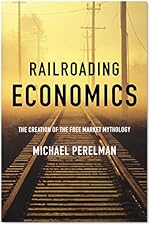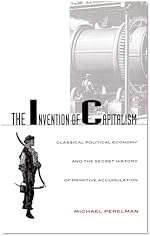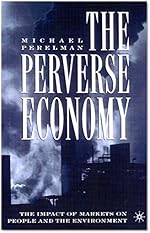The Demise of Higher Education in the United States
The United States has experienced two major growth spurts in higher education. In 1862, the Morrill Act changed the face of higher education will by granting each state 30,000 acres of public land for each senator and representative. Sale of the land was intended to create an endowment fund for the support of colleges in each of the states. Prior to the creation of the land-grant colleges, higher education was predominantly intended for wealthy students and those intending to serve as clergy. The land-grant colleges expanded higher education to different regions and a different class of students. This expansion, however, was still incomplete.
The second episode was the G.I. Bill, which was not so much intended to promote education, but rather to prevent another Bonus March, in which angry soldiers returning from the First World War demanded early payment of their promised bonuses to help cushion the hardships of the Great Depression. Offering education was expected to channel potential discontent.
The G.I. Bill paid a different kind of bonus. The doors of colleges and universities opened to people for whom higher education would have been out of reach. Their skills proved invaluable during the postwar economic boom. A second unintended bonus flowed from the G.I. Bill. To accommodate the massive inflow of students, colleges and universities built infrastructure to expand their capacity to handle so many students. After the wave of veteran enrollments dissipated, colleges and universities had to choose between letting this infrastructure sit idle or enrolling more students.
Judging from my experience teaching during the Vietnam War, returning these veterans must have made an important contribution to the teaching environment. Although many soldiers were unable to put their lives together after the trauma of war, some came back, totally focused on making something of themselves. Some of their maturity and dedication rubbed off onto the younger cohort of students.
A less dramatic burst of government spending into education came from the National Defense Education Act of 1958, which was a response to the USSR’s launch of Sputnik, the previous year. This time, much of the money was narrowly focused on improving the quality of science and language education.
I have personally experienced the rise and fall of higher education in the United States. I enrolled at the University of Michigan in 1957, a few months before Sputnik was launched then, in 1965, I enrolled in graduate school at the University of California, Berkeley. This was a time of great optimism about the future. I did not realize that very hard times for higher education were about to begin.
As the student population swelled during the 1960’s, the youth culture developed as a result of demographic changes, the Vietnam War and skepticism about consumptionism clashed with a different kind of pressure: a sagging rate of profit, following decades of unparalleled prosperity.
Under these conditions, the goal became to reverse the gains from the G.I. Bill. Rather than including people in education, who might otherwise threaten the status quo, reining in the University system seemed urgent. In the fall of 1970, Governor Reagan’s aide Roger Freeman, who later served as President Nixon’s educational policy advisor, while he was working at the time for California Governor Ronald Reagan’s reelection campaign, commented on Reagan’s education policy: “We are in danger of producing an educated proletariat. That’s dynamite! We have to be selective about who we allow to through higher education. If not, we will have a large number of highly trained and unemployed people.”
In 1971, just before he was nominated for the Supreme Court, Lewis Powell, a corporate lawyer wrote a now-famous memo, “Attack of American Free Enterprise System” for the Chamber of Commerce. Higher education appeared to be at the heart of this attack on free enterprise. He described how the Chamber could gain more control over the educational system.
Although the memo was superficial at best, it sparked great interest among the elites, influencing or inspiring the creation of the Heritage Foundation, the Manhattan Institute, the Cato Institute, Citizens for a Sound Economy, Accuracy in Academe, and other powerful organizations.
The response to the falling rate of profit also played a role in changing education. Tax reduction had the attraction of partially restoring profits, but it also had an important effect on education. Growing budget deficits would ramp up pressure to privatize what had been previously public responsibilities. By largely defunding education, universities became increasingly dependent on corporate money. Administrators became cautious about allowing expression of ideas that might seem upsetting to business. These factors took an enormous toll on higher education.
Tuition began a rapid ascent. Student debt accumulated. University funds were concentrated on programs that cater to business needs, such as biotechnology and engineering, and, naturally, business schools. Visiting Berkeley, I am always struck by the lavish libraries for biotechnology and business, while the other disciplinary libraries were unchanged. The one exception that stood out was public health, which was torn down to make way for a new biotech building and then moved to the basement of an old administrative building.
The educational assembly-line that Mario Savio described during the Free Speech Movement at Berkeley has changed, but not for the better. At the same time, leaders in business and politics insist that education is an essential element to a successful economy. Nonetheless, education becomes increasingly unaffordable, at the same time that the quality. Each cohort of students seems less prepared than the last.
All the while, graduate programs are educating students for work that they love, even though top prospect are slim.

 25 – The Confiscation of American Prosperity: From Right-Wing Extremism and Economic Ideology to the Next Great Depression
25 – The Confiscation of American Prosperity: From Right-Wing Extremism and Economic Ideology to the Next Great Depression 30 – Manufacturing Discontent: The Trap of Individualism in Corporate Society
30 – Manufacturing Discontent: The Trap of Individualism in Corporate Society Class Warfare in the Information Age
Class Warfare in the Information Age Railroading Economics: The Creation of the Free Market Mythology
Railroading Economics: The Creation of the Free Market Mythology Steal This Idea: Intellectual Property Rights and the Corporate Confiscation of Creativity
Steal This Idea: Intellectual Property Rights and the Corporate Confiscation of Creativity The Invention of Capitalism: Classical Political Economy and the Secret History of Primitive Accumulation
The Invention of Capitalism: Classical Political Economy and the Secret History of Primitive Accumulation The Perverse Economy: The Impact of Markets on People and the Environment
The Perverse Economy: The Impact of Markets on People and the Environment
[…] The Demise of Higher Education in the United States « unsettling … Posted in Higher Education Tags: changed-the, changed-the-face, education, growth-spurts, […]
Michael,
Excellent post and summary of higher ed in the US and the govt’s role.
I was just wondering about the your observation:
The second episode was the G.I. Bill, which was not so much intended to promote education, but rather to prevent another Bonus March, in which angry soldiers returning from the First World War demanded early payment of their promised bonuses to help cushion the hardships of the Great Depression. Offering education was expected to channel potential discontent
I realize that in any political action there are many movers but why do you give primacy to the idea that “The second episode was the G.I. Bill, which was not so much intended to promote education, but rather to prevent another Bonus March … Offering education was expected to channel potential discontent.” What are your sources for this observation?
Here is a snippet from by book, The Confiscation of American Prosperity
Political leaders also wanted to prevent a repeat of a confrontation, such as the Bonus March,
a Washington gathering of poor,World War I veterans only a little more than a decade before, in 1932, which General Douglas MacArthur violently routed.
To accommodate the returning soldiers, Congress passed the GI Bill, which funded university education for about one-half of the surviving veterans following
World War II. This program dramatically broke with the elite academic traditions and triggered one of the most massive transformations of social capabilities in the history of the United States (Skocpol 1998, 96).
The agricultural economy had shed millions of workers. Many of the soldiers from rural areas had no economy and no job prospects in agriculture. Not only were GIs sent to college, many had training in electronics, aviation and other higher skills in the military.
The GI Home loans help fuel the movement of families from rural areas with no jobs to the new suburbs in areas with jobs.
I agree with the lack of job prospects, but most economists at the time expected even greater problems because the withdrawal of military spending would send the economy back into a depression, which did not happen. A few got higher training, especially for electronics in the navy. I had not thought about the home loan transition from the countryside. Good point. Thank you.
[…] case, but worse education is certainly a prescription for disaster. This is from Michael Perelman: The Demise of Higher Education in the United States, Unsettling Economics: The United States has experienced two major growth spurts in higher […]
Michael, How do you see such efforts as those trying to provide “free” higher education to the masses, as outlined in a recent Reuters article: “Top U.S. colleges to offer free classes online” (April 18, 2012) http://www.reuters.com/article/2012/04/18/net-us-usa-college-online-idUSBRE83H0PC20120418? A friend says that with most of academia in a long-term economic decline, it is suicide for universities to give away free access to education. Is this nascent attempt a brave new world for higher education, or an unrealistic goal, giving the historical corporate and political influences you outlined in your essay above, that seem to resist the idea of a greater percentage of the population gaining the ability to enter the spheres of economic, political and social influence via their education?
[…] but worse education is certainly a prescription for disaster. This is from Michael Perelman: The Demise of Higher Education in the United States, Unsettling Economics: The United States has experienced two major growth spurts in higher education. In 1862, the […]
I couldn’t find any RSS feed for this blog to add to my yahoo page.
[…] Read the rest. Share this:StumbleUponDiggRedditFacebookTwitterLike this:LikeBe the first to like this post. This entry was posted in Corpocracy, Economy, Education, Global Corporate U., Wealth. Bookmark the permalink. ← Michael Hudson eviscerates the lootocrats […]
[…] The Demise of Higher Education in the United States « unsettling economics […]
Great share. I studied economics at The Ohio State University after studying first 3 years in Engineering. I agree there is some sort of calculated and strategic plan to do away with higher learning.
It doesn’t bother me too much, because I don’t believe a piece of paper with a designation defines me, nor does it promise success. I agree with acquiring the GSD, that’s the Get Stuff Done degree.
Thanks for sharing,
Lance
“We have to be selective about who we allow to [go] through higher education.”
I’m assuming that you are suggesting that certain people want to keep people from gaining access to higher education. What I would ask is don’t you think we’re headed that way thanks to runaway college and university budgets?
At 7% annual increases in budgets (and sometimes higher) that means costs double every 10 years. In 20 years from now, the middle class will be shut out of college. Only the elites that can easily write a check for the college tuition and those in lower income who receive government assistance will get a higher education.
I wonder if this is by design too?
[…] case, but worse education is certainly a prescription for disaster. This is from Michael Perelman: The Demise of Higher Education in the United States, Unsettling Economics: The United States has experienced two major growth spurts in higher education. In 1862, the […]
[…] The Demise of Higher Education in the United States « unsettling economics […]
Glad to see this post remembered and linked from Naked Capitalism. A persipicacious post. Thanks!